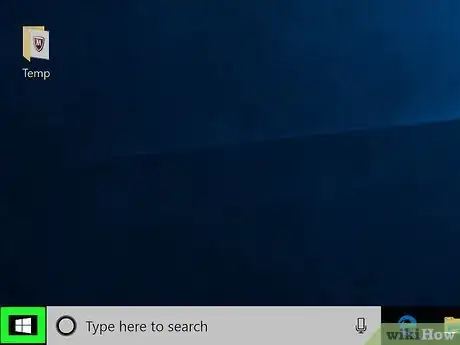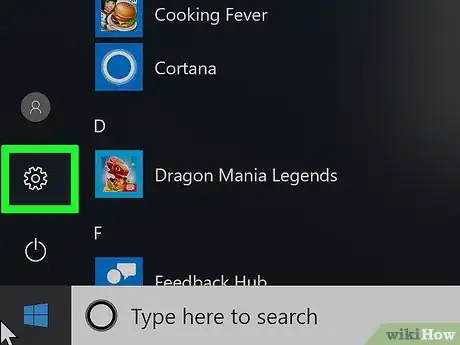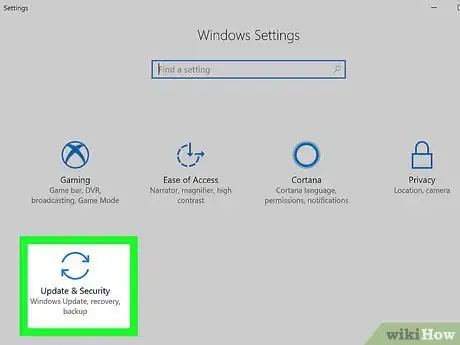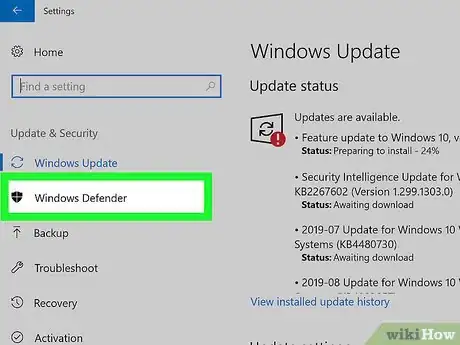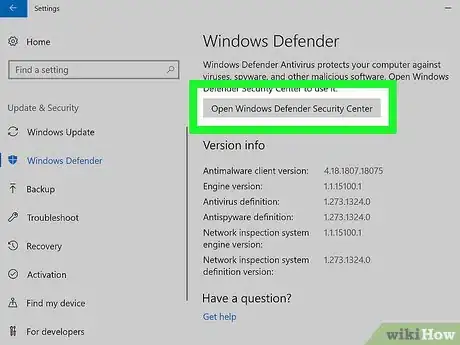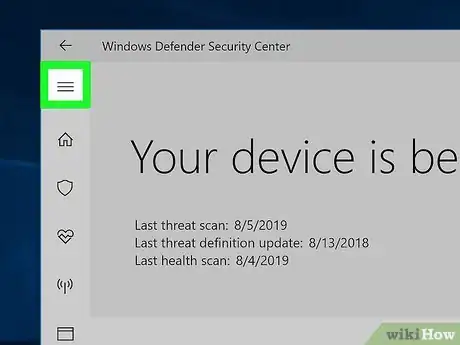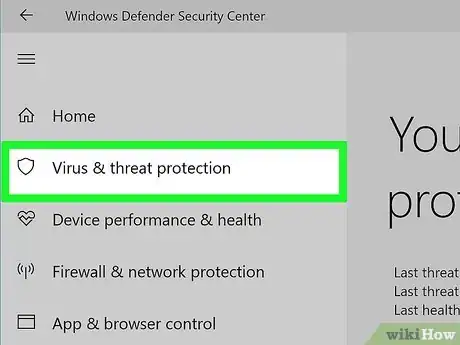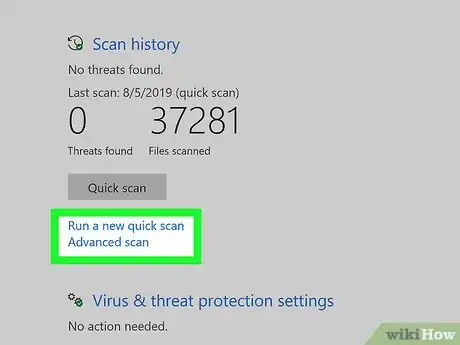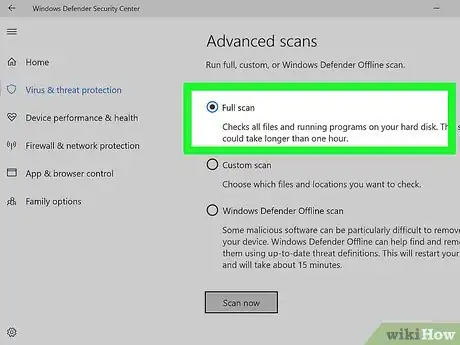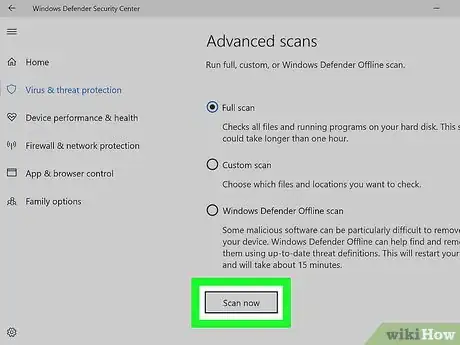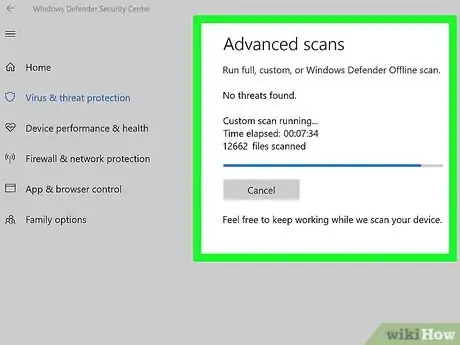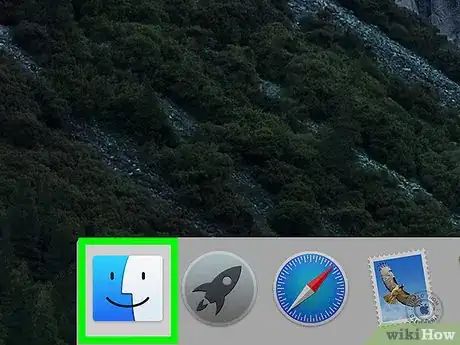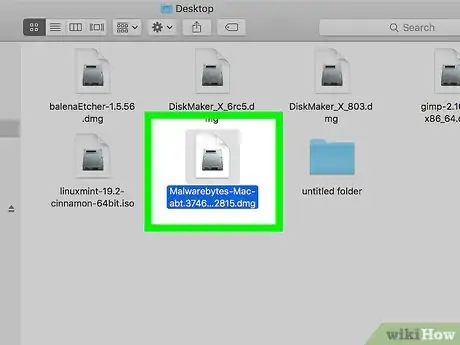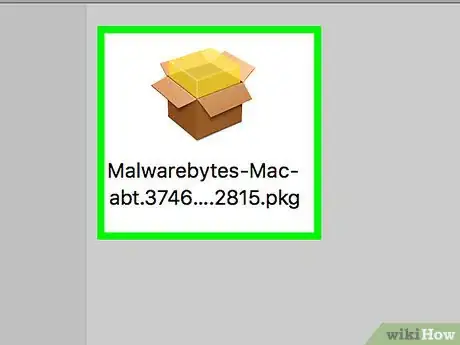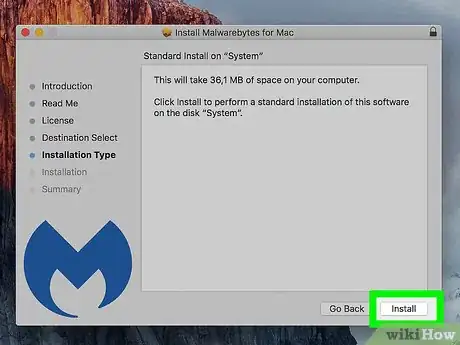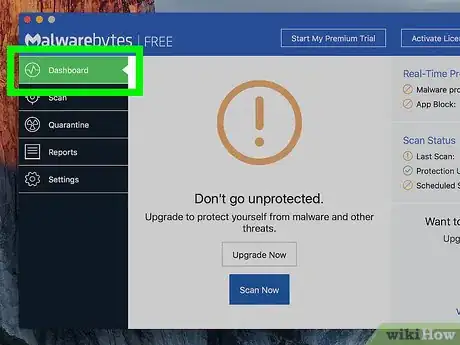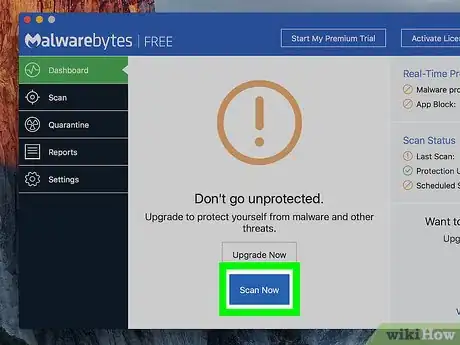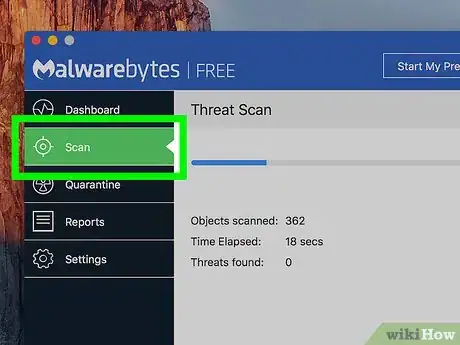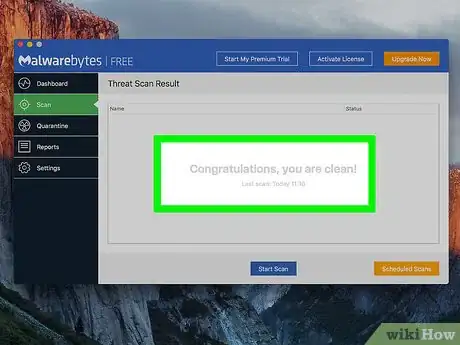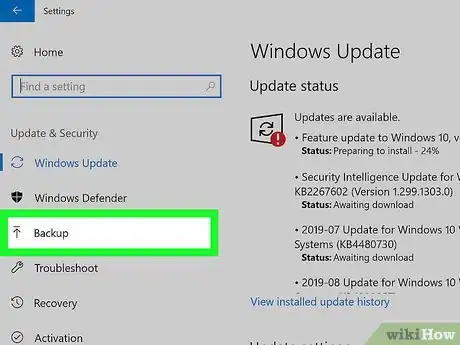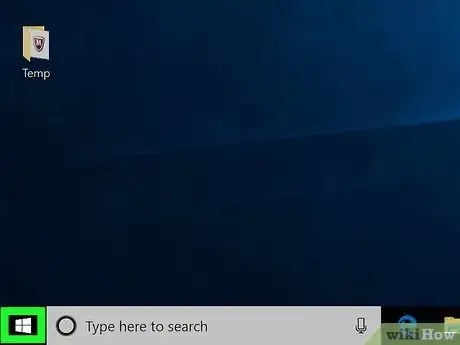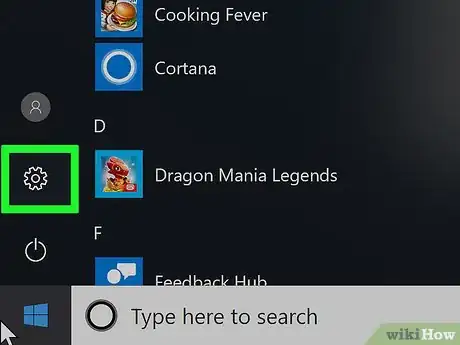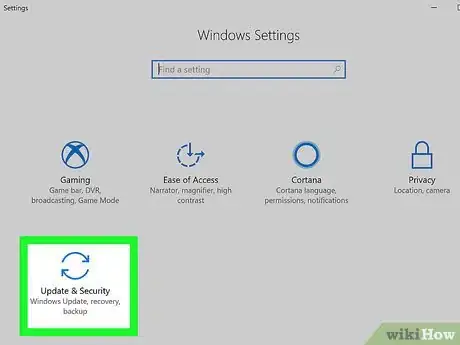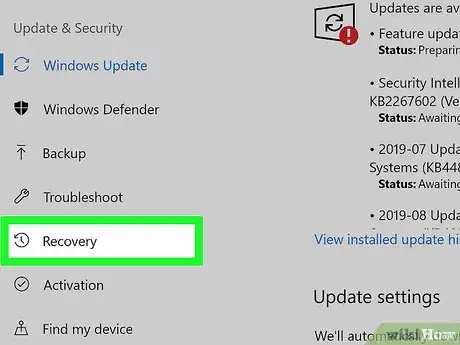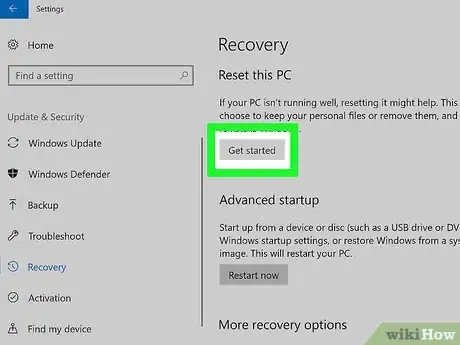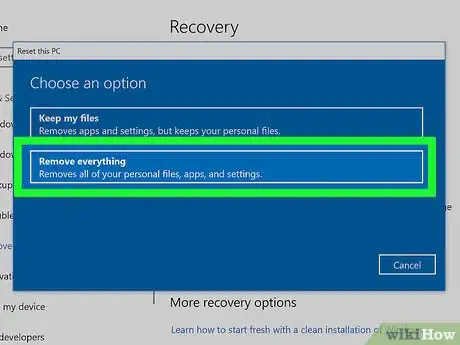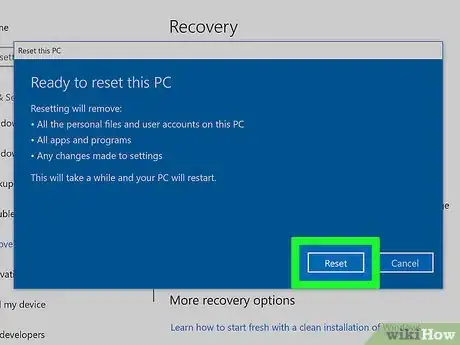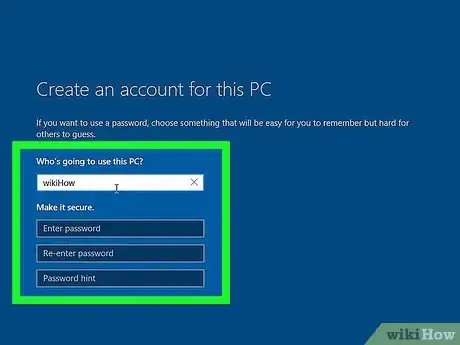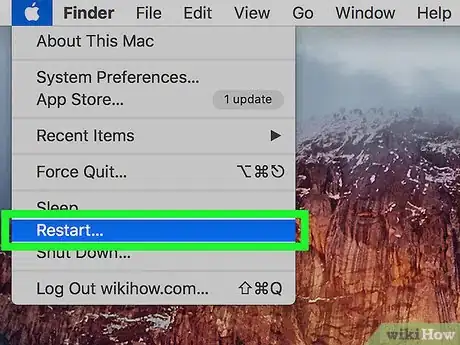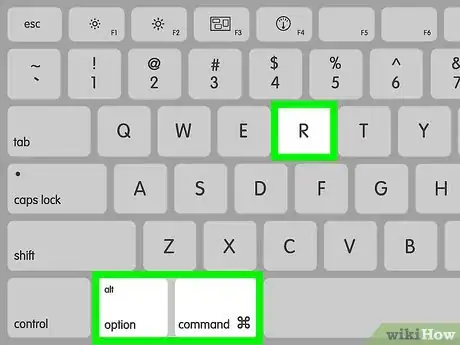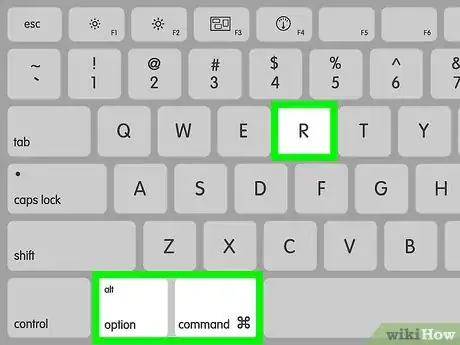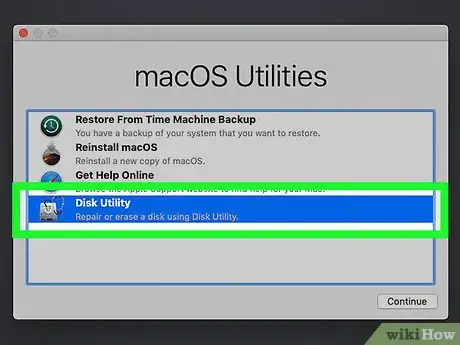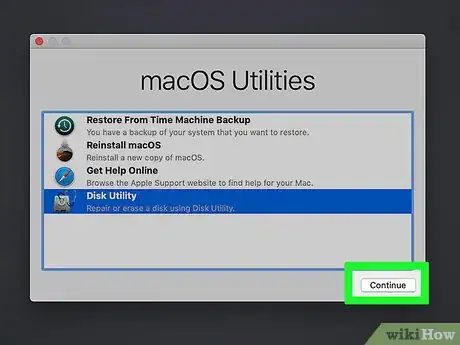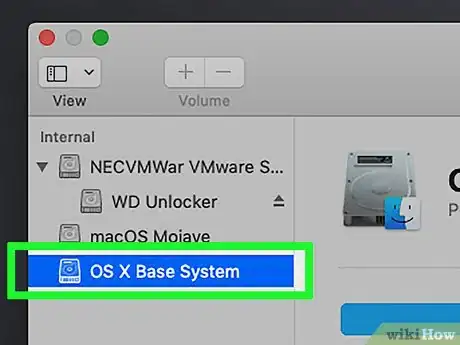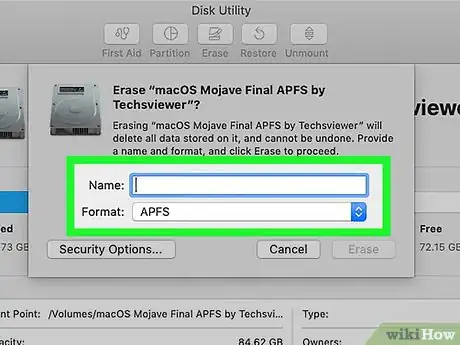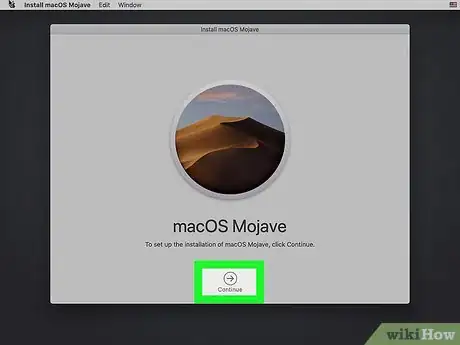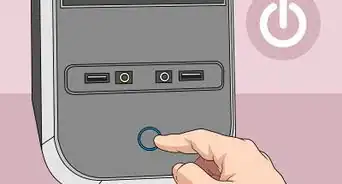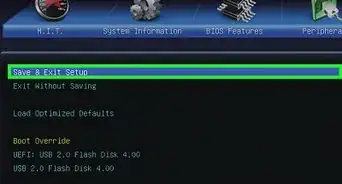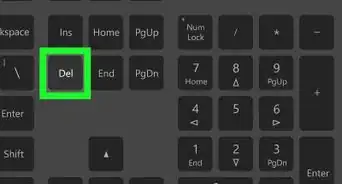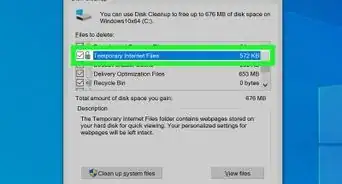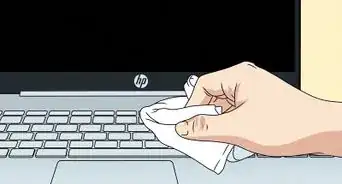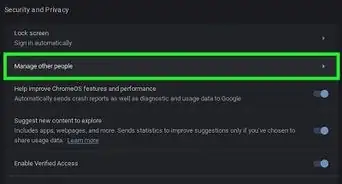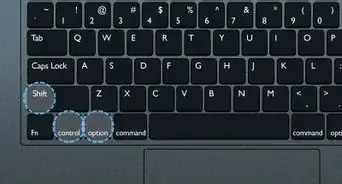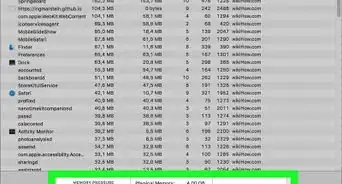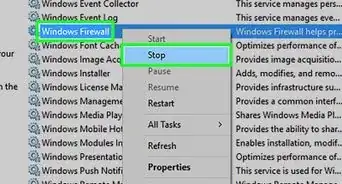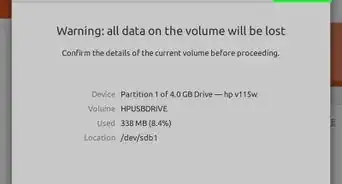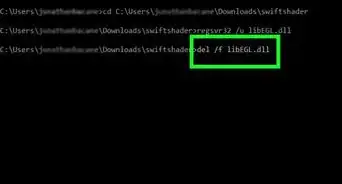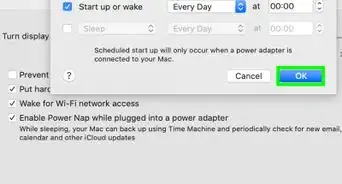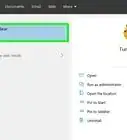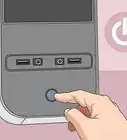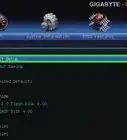This article was co-authored by Jeremy Mercer and by wikiHow staff writer, Jack Lloyd. Jeremy Mercer is the Manager and Head Technician at MacPro-LA in Los Angeles, CA. He has over ten years of experience working in electronics repair, as well as retail stores that specialize in both Mac and PC.
The wikiHow Tech Team also followed the article's instructions and verified that they work.
This article has been viewed 64,317 times.
This wikiHow teaches you how to find and remove malware from your Windows or Mac computer. Typically speaking, an antivirus scan will be enough to remove most major threats to your computer. If you're having trouble with your malware removal, however, the best way to prevent the malware from spreading is by backing up your files and then reinstalling your computer's operating system.
Steps
Scanning for Malware on Windows
-
1
-
2Advertisement
-
3
-
4Click Windows Defender. It's a tab in the upper-left side of the window.
-
5Click Open Windows Defender Security Center. This button is at the top of the window. Clicking it opens the Windows Defender program, which is the Windows built-in antivirus software.
- Windows Defender is the recommended antivirus software for Windows computers. Using any other software in conjunction with Defender may cause problems such as an inability to shut down.
-
6Click ☰. It's in the top-left corner of the Windows Defender window. A pop-out menu will appear.
-
7Click Virus & threat protection. You'll see this in the pop-out menu.
-
8Click Advanced scan. It's a link just below the Quick scan button.
-
9Check the Full scan option. This is at the top of the window.
- If you're encountering malware issues and this scan doesn't solve them, you can try using the Offline scan option on this page to perform a deeper, file-based scan.
-
10Click Scan now. It's in the middle of the page. Windows Defender will begin scanning your computer for infected files.
-
11Wait for results. Windows Defender will alert you if it comes across viruses or other instances of Malware, at which point you'll be able to indicate that you want Defender to remove the malware in question.
- A malware scan can take several hours to complete.
Scanning for Malware on Mac
-
1Download Malwarebytes. Go to https://www.malwarebytes.com/mac-download/ in your browser to prompt Malwarebytes to begin downloading. Macs don't come with a built-in antivirus program, so Malwarebytes is your best bet.[1]
- Although Malwarebytes offers a paid premium version with real-time protection, you can use the free version to scan your computer and remove viruses or malware at any time.
-
2
-
3Find and double-click the Malwarebytes DMG file. You'll most likely find it in the Downloads folder that's on the left side of the Finder window. The DMG file will either open or result in an error message.
-
4Verify the software installation. You'll need to do this if you receive an error message when attempting to open Malwarebytes.
- If Malwarebytes is recognized as a signed developer on your Mac, you won't have this step.
-
5Double-click the "Malwarebytes 3" file. This file resembles a white box with a dark-blue Malwarebytes logo on it. Doing so will open the setup window.
-
6Set up Malware bytes. Navigate through the setup by doing the following:
- Click Continue
- Click Agree
- Click Install
- Enter your username and password.
- Click Install Software
- Click Close when prompted.
-
7
-
8Click the Dashboard tab. It's in the upper-left corner of the Malwarebytes window.
-
9Click Scan Now. This button is at the bottom of the window. Doing so will prompt Malwarebytes to begin scanning your Mac for malicious software.
-
10Click the Scan tab. You'll find it on the left side of the window.
-
11Click Confirm when prompted. It's at the bottom of the Malwarebytes window. If any malicious programs are found, Malwarebytes will immediately quarantine those files on your Mac so they will no longer harm your computer.
Reinstalling Windows
-
1Back up any files that you want to save. Since you'll be erasing your computer's hard drive and then reinstalling Windows onto it, make sure that any files which you want to save are backed up onto an external hard drive (or cloud storage).
- Keep in mind that malware often attaches itself to files or programs. If you suspect that a program that you downloaded is the reason for an infection, do not back that file up to your external hard drive.
-
2
-
3
-
4
-
5Click the Recovery tab. You'll find this tab on the left side of the window.
-
6Click Get started. It's a button below the "Reset this PC" heading at the top of the page. A pop-up window will appear.
-
7Click Remove everything. This option is at the bottom of the pop-up window.
-
8Click Remove files and clean the drive. It's at the bottom of the pop-up window.
-
9Click Reset when prompted. Doing so will allow your computer to begin erasing and reinstalling Windows.
- This process can take several hours, so make sure that your computer is plugged into a reliable power source.
-
10Set up your computer. This will generally consist of selecting a region, a language, a timezone, and your Microsoft email address.
Reinstalling macOS
-
1Back up any files that you want to save. Since you'll be erasing your computer's hard drive and then reinstalling macOS onto it, make sure that any files which you want to save are backed up onto an external hard drive (or cloud storage).
- Keep in mind that malware often attaches itself to files or programs. If you suspect that a program that you downloaded is the reason for an infection, do not back that file up to your external hard drive.
-
2
-
3Hold down ⌥ Option+⌘ Command+R. Do so immediately after clicking Restart, and don't stop holding down these keys until the Apple logo appears.
-
4Wait for the Apple logo to appear. This may take between 10 and 20 seconds.
- For some computers, you'll see a spinning globe appear instead.
-
5Release ⌥ Option+⌘ Command+R. Once you see the Apple logo appear, you can release the keys. The setup window will appear after a few seconds.
-
6Click Disk Utility. It's in the setup window.
-
7Click Continue. You'll see this button in the bottom-right corner of the setup window.
-
8Select your Mac's hard drive. On the left side of the window, click the Mac's hard drive.
-
9Click Erase. This tab is at the top of the Disk Utility window. A pop-up window will appear.
-
10Select a format. Click the "Format" drop-down box, then click Mac OS Extended (Journaled) in the resulting drop-down menu.[2]
-
11Click Erase. It's at the bottom of the window. This will prompt your hard drive to begin erasing everything on it, including any leftover malware.
-
12Wait for your hard drive to finish erasing. This can take several minutes to an hour or more, so just make sure that your Mac is connected to a reliable power source. Once the hard drive finishes erasing, you'll be taken back to the setup page.
-
13Click Reinstall macOS. It's in the middle of the setup window.
-
14Click Continue. This is in the bottom-right corner of the window.
-
15Follow the setup prompts. You'll most likely be asked to enter your Apple ID and select a disk (e.g., your Mac's hard drive) for installation.
-
16Click Install when prompted. Doing so will allow your Mac to begin installing a fresh copy of the most recent version of macOS.
- You'll have to set up your Mac's preferences once the installation is complete.
Expert Q&A
Did you know you can get expert answers for this article?
Unlock expert answers by supporting wikiHow
-
QuestionIs Malwarebytes safe?
 Jeremy MercerJeremy Mercer is the Manager and Head Technician at MacPro-LA in Los Angeles, CA. He has over ten years of experience working in electronics repair, as well as retail stores that specialize in both Mac and PC.
Jeremy MercerJeremy Mercer is the Manager and Head Technician at MacPro-LA in Los Angeles, CA. He has over ten years of experience working in electronics repair, as well as retail stores that specialize in both Mac and PC.
Computer Repair Technician
-
QuestionDo antivirus programs clear out malware?
 Jeremy MercerJeremy Mercer is the Manager and Head Technician at MacPro-LA in Los Angeles, CA. He has over ten years of experience working in electronics repair, as well as retail stores that specialize in both Mac and PC.
Jeremy MercerJeremy Mercer is the Manager and Head Technician at MacPro-LA in Los Angeles, CA. He has over ten years of experience working in electronics repair, as well as retail stores that specialize in both Mac and PC.
Computer Repair Technician
-
QuestionDoes CC Cleaner remove malware?
 Jeremy MercerJeremy Mercer is the Manager and Head Technician at MacPro-LA in Los Angeles, CA. He has over ten years of experience working in electronics repair, as well as retail stores that specialize in both Mac and PC.
Jeremy MercerJeremy Mercer is the Manager and Head Technician at MacPro-LA in Los Angeles, CA. He has over ten years of experience working in electronics repair, as well as retail stores that specialize in both Mac and PC.
Computer Repair Technician
References
- ↑ Jeremy Mercer. Computer Repair Technician. Expert Interview. 26 July 2019.
- ↑ https://support.apple.com/en-us/HT204904
